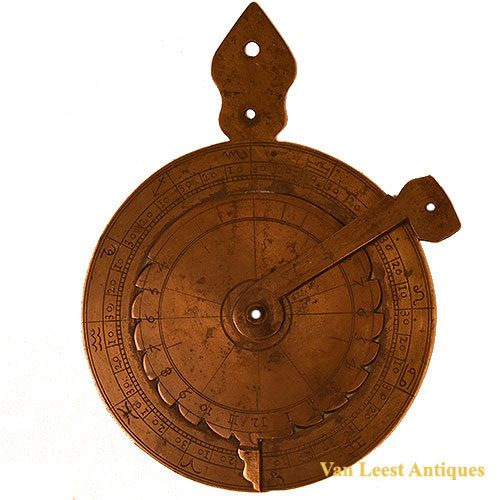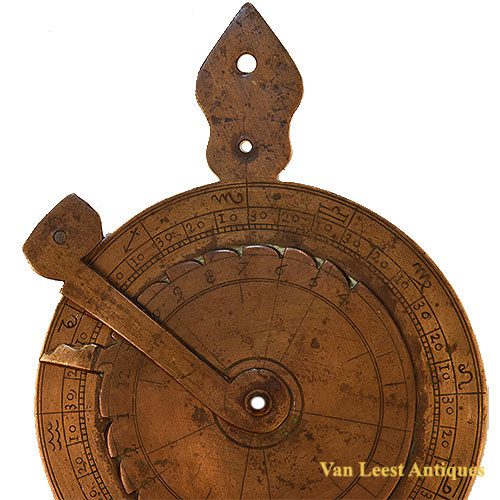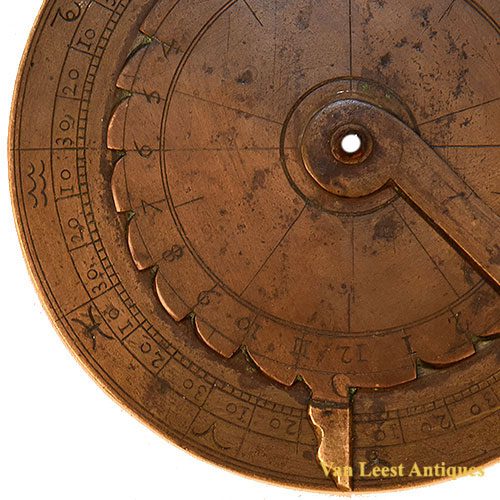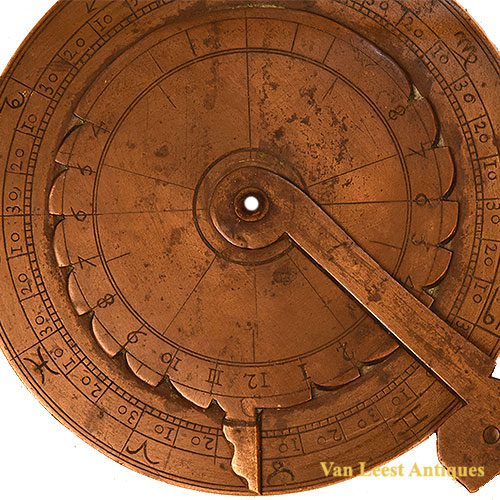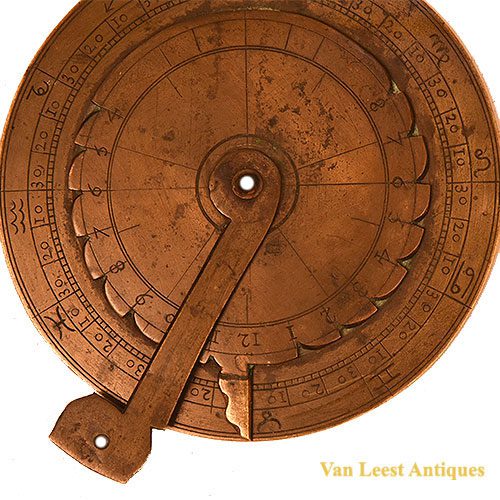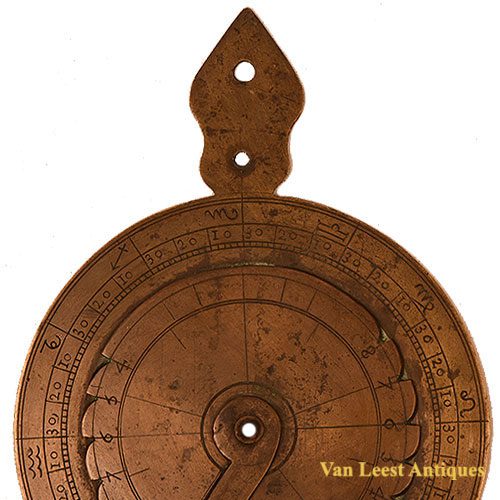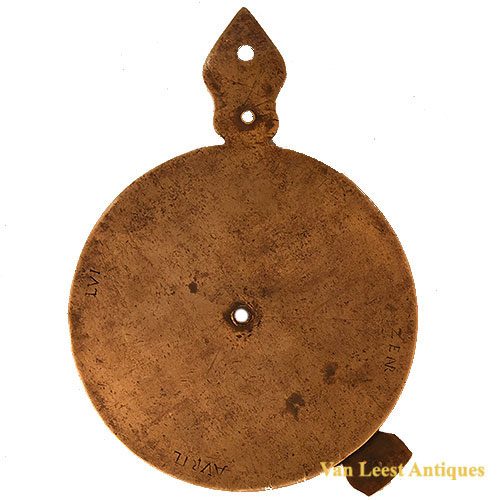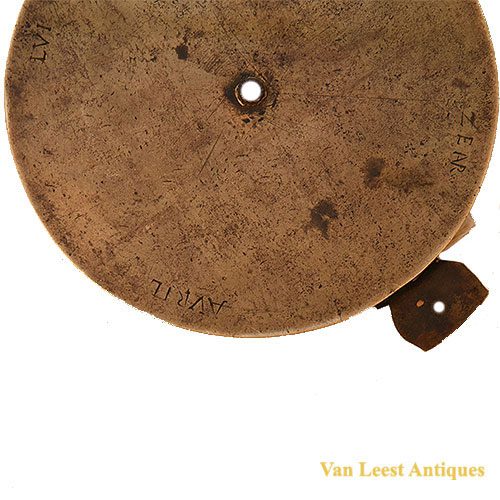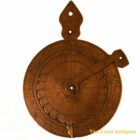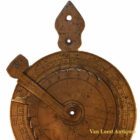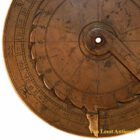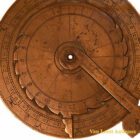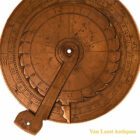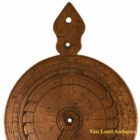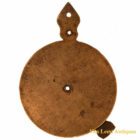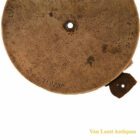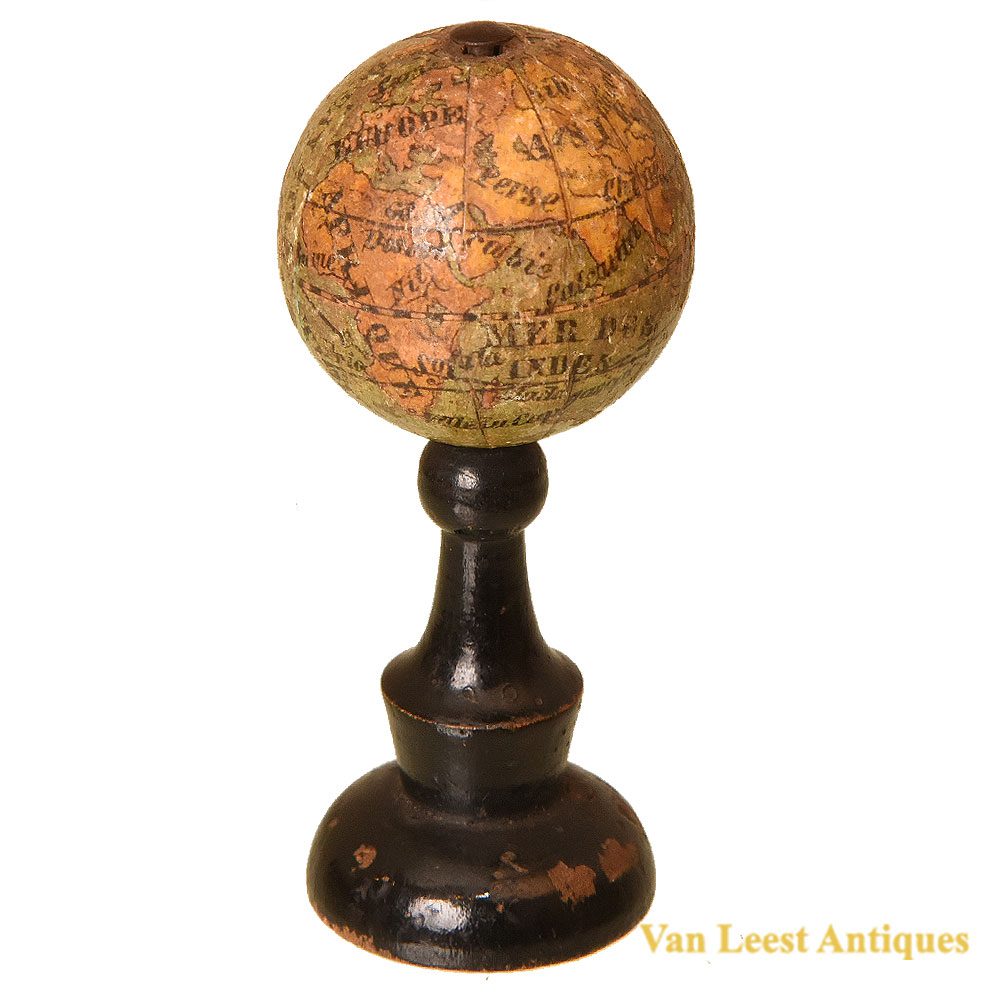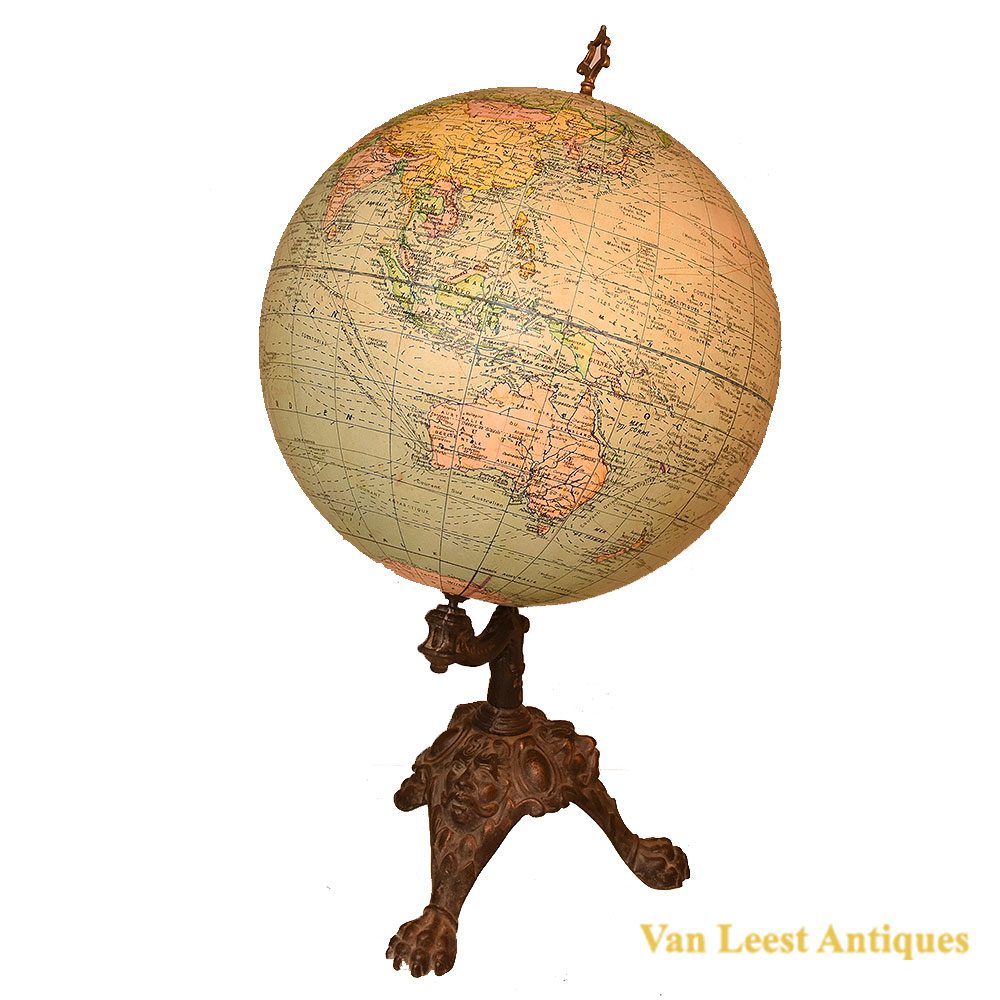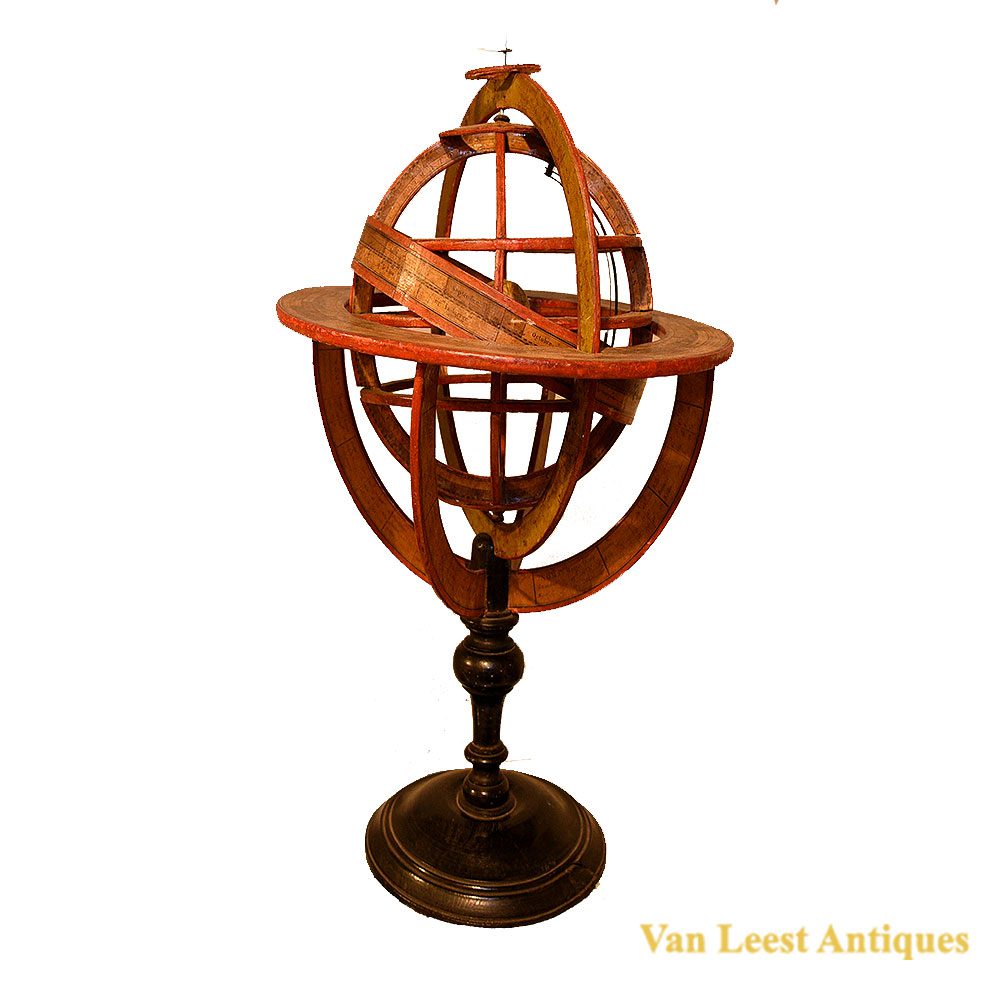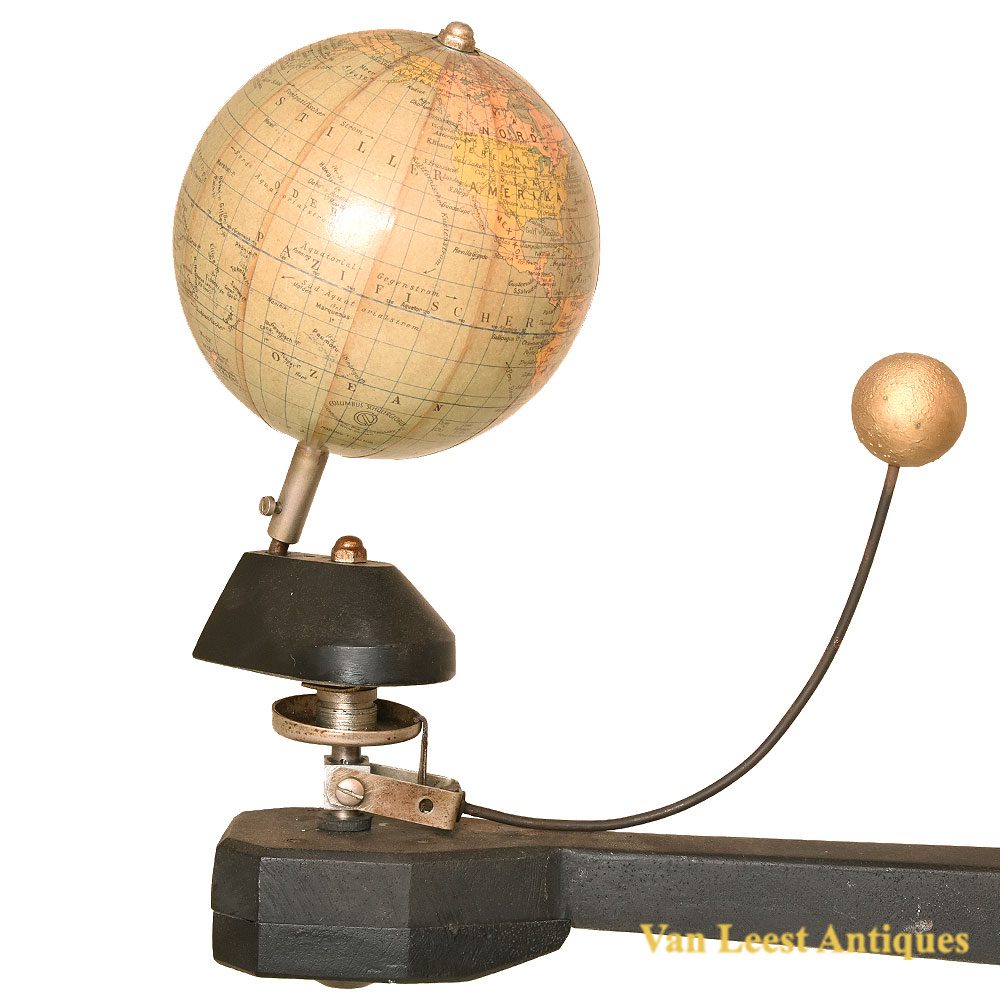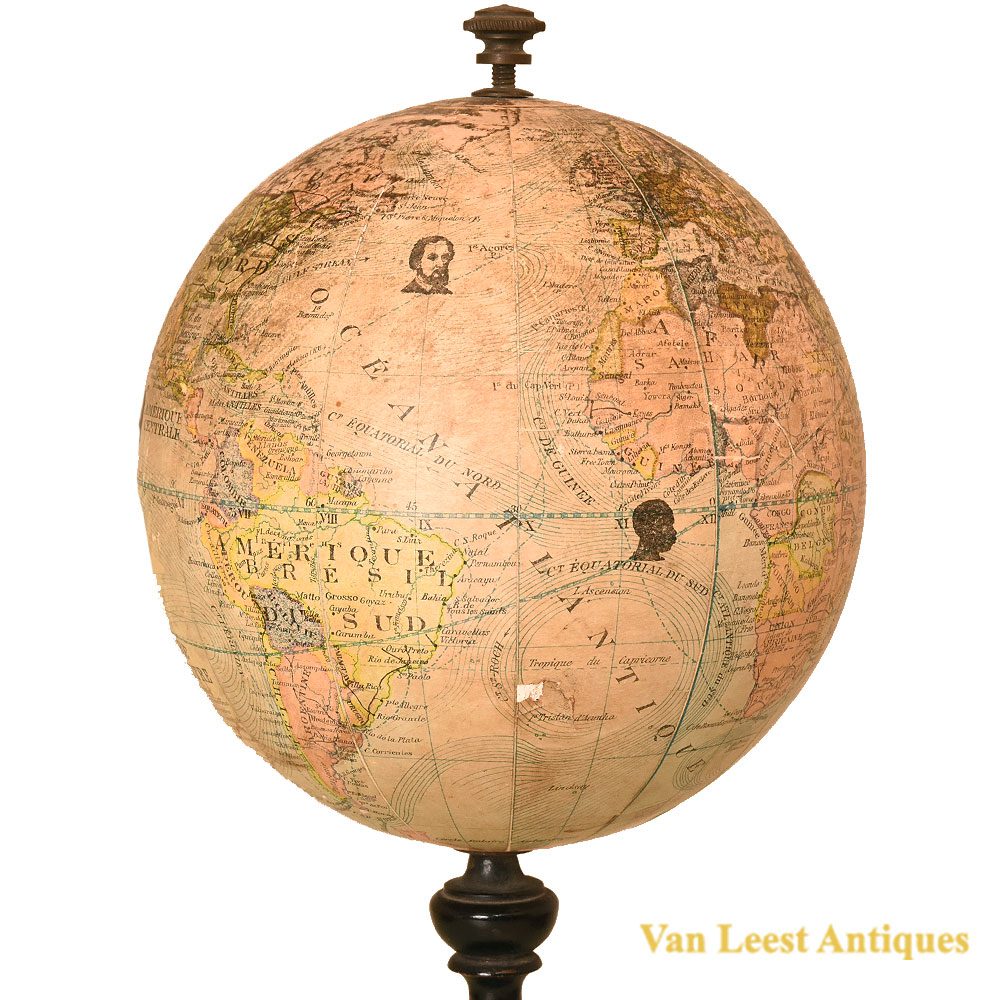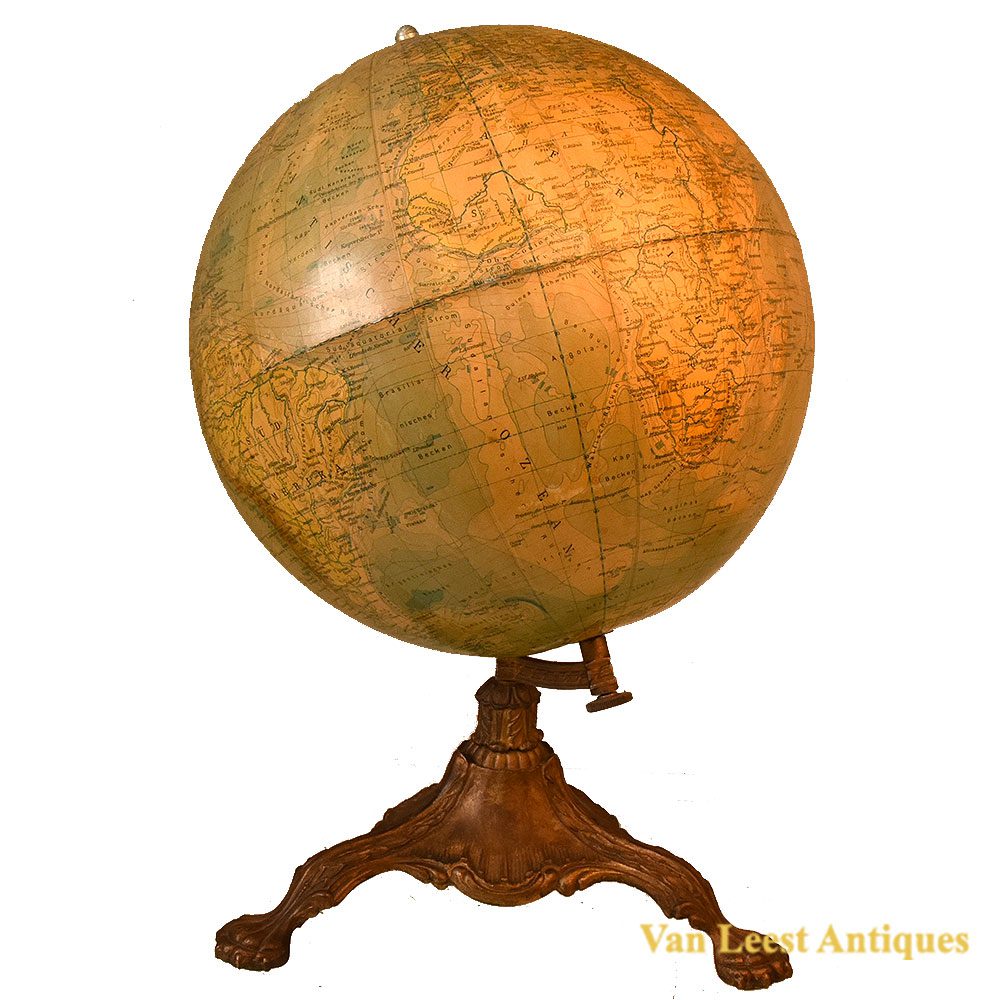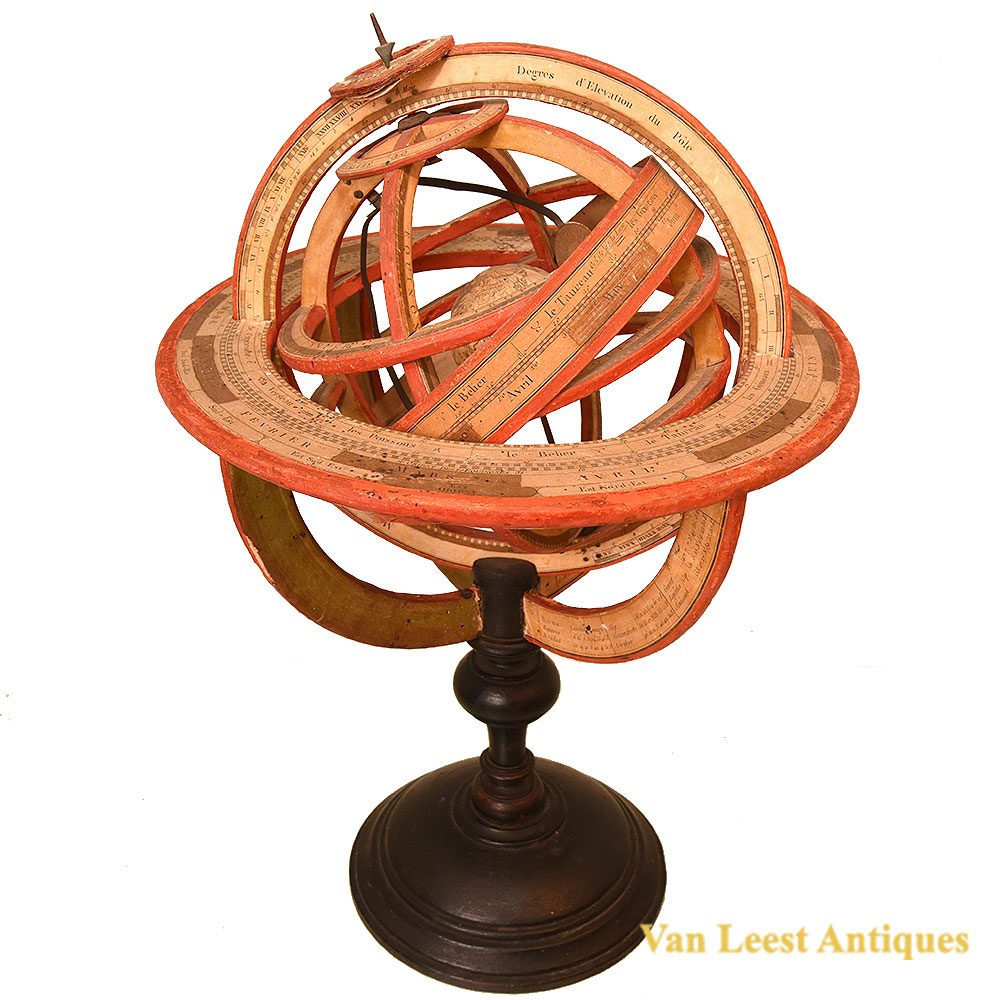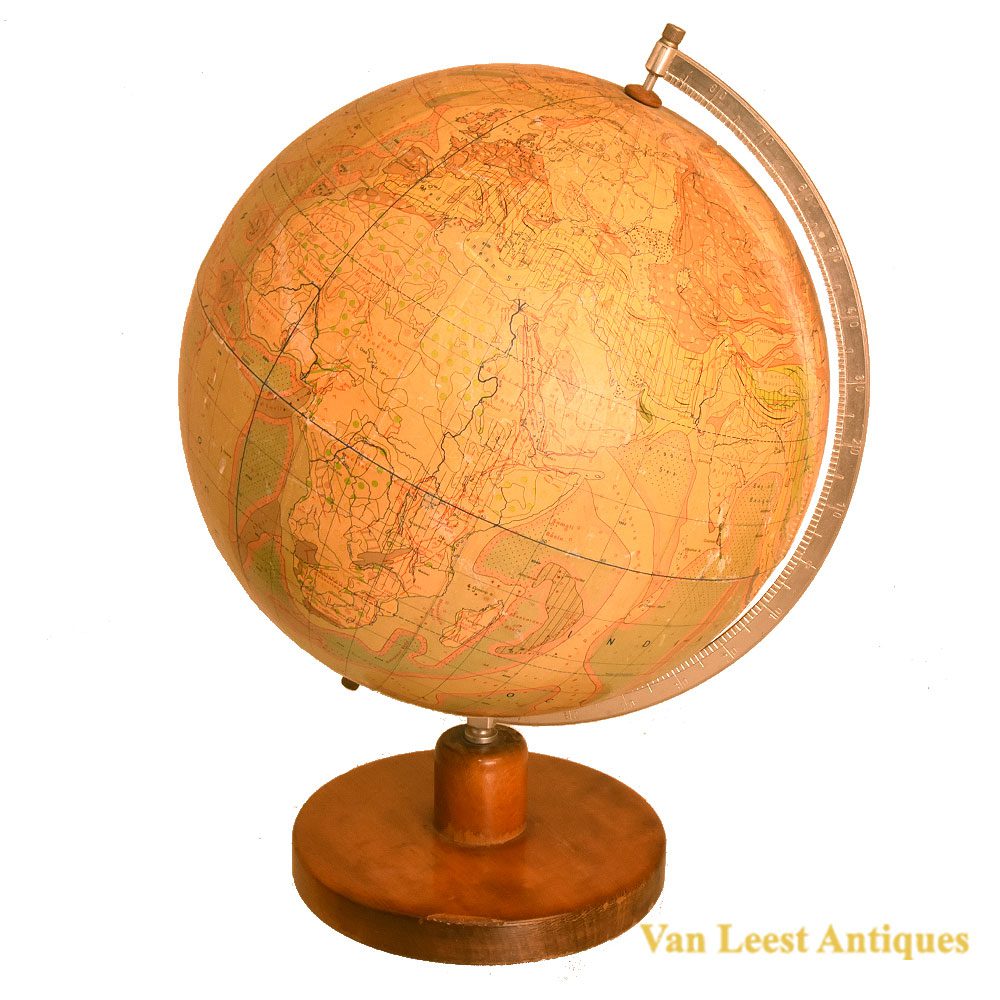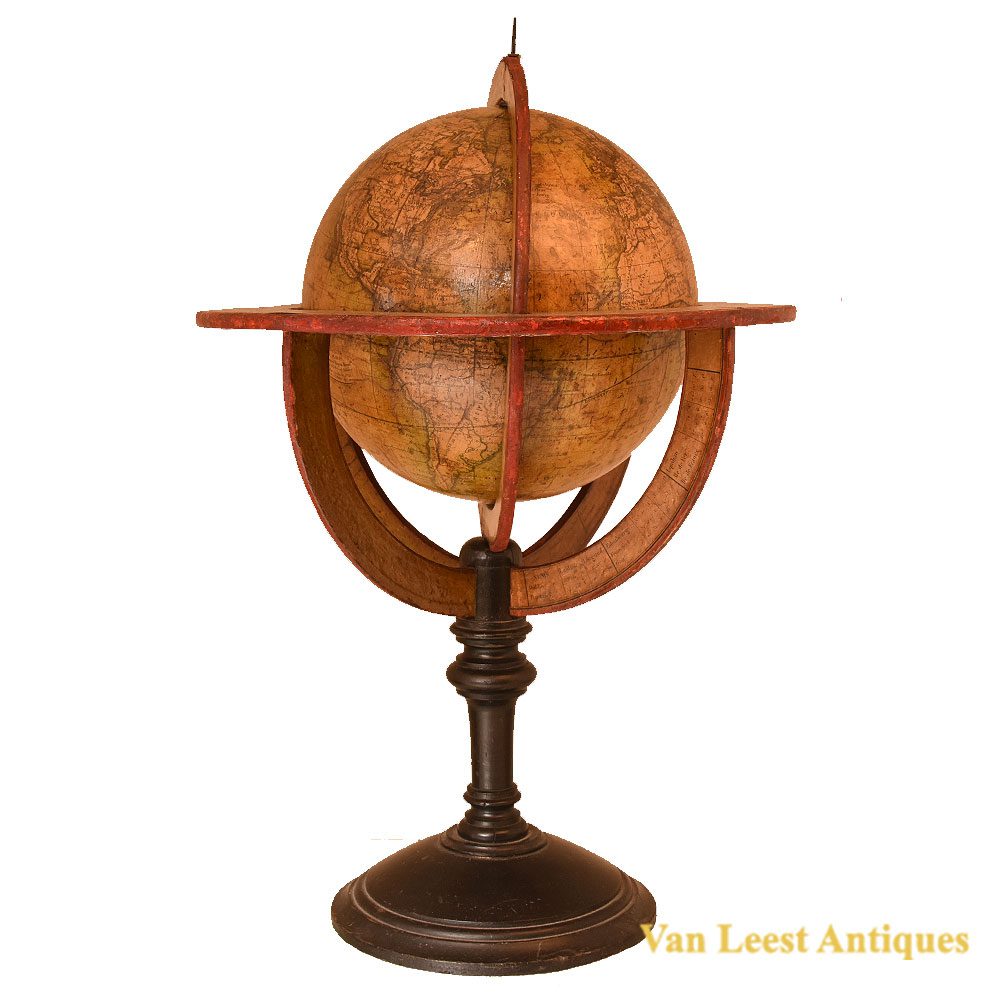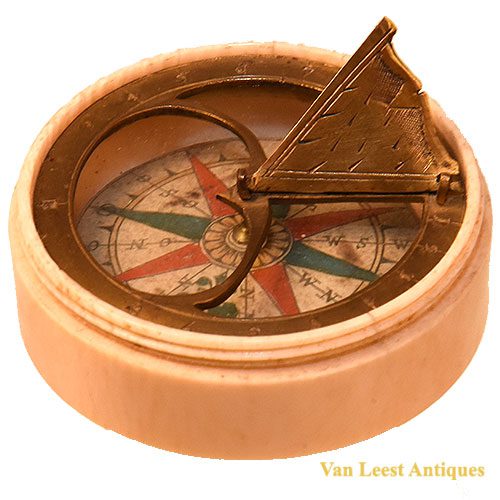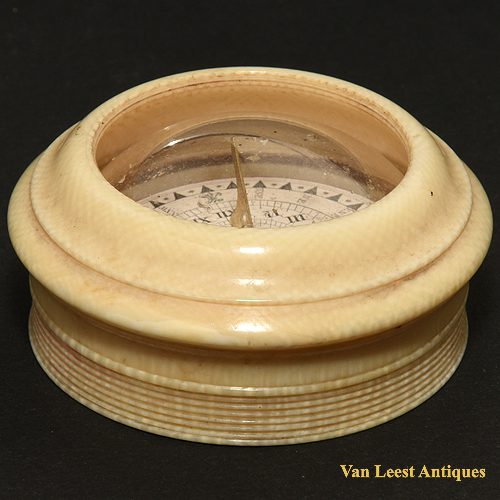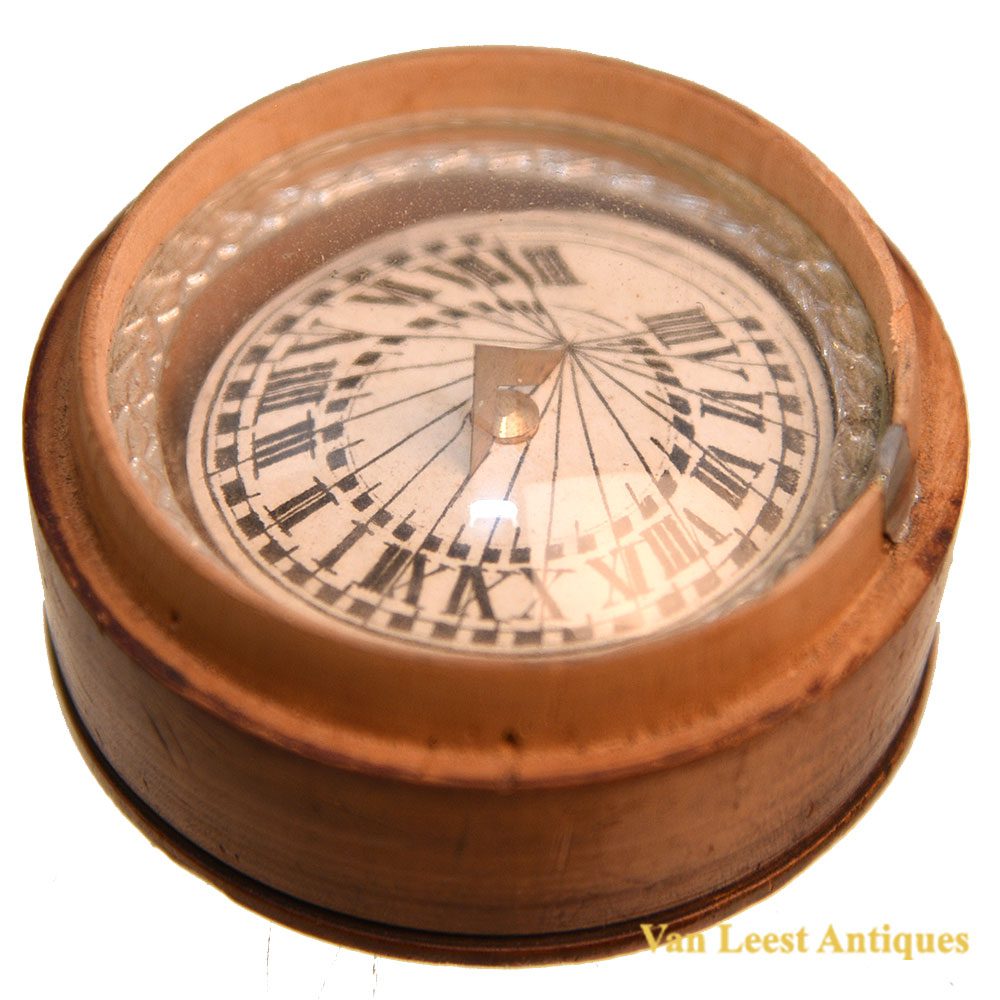North Italian Orlogie Nocturnal
On application
A North Italian orlogie nocturnal, Brass, late 16th– beginning 17th century, not signed.
Main disc with a diameter of 10 cm., a hole at the centre and a handle/extension of about 4 cm. Rotatable hour disc with teeth and also a pointer arm of about 6 cm length, with hole at end, both pivoted to the centre of the main disc.
The main disc has anti clockwise a zodiac scale, each sign subdivided into 15 equal parts, numbered 10-20-30. There is no date/month scale as well, which is unusual. The zenith (highest point) is at the end of Aries, beginning of Taurus (20 April). The meridian (lowest point) is at the end of Libra, beginning of Scorpio (23 October).The reverse is plain, with the exception of the following markings: ZEN AVRIL LVI . This could probably mean zenith at April 56 ? (a not understood date or year).
The rotatable disc has a hour scale numbered anti clockwise 4-12, 1-8 (the night hours) with teeth marking each hour and no further subdivisions. A pointer is placed at the 12 hour position.
The pointer arm with hole is made for sighting the Little Bear (the star Kochab). This is based on the given length, zenith and meridian and usual for an Italian nocturnal.
A nocturnal is a device for telling the time at night by means of the stars, mostly dating from the 16th and 17th centuries. They measure the rotation of the Great Bear and/or the Little Bear around the polar star during night time.
This nocturnal carries only the basic information required for obtaining the time at night. It is held vertically at arm’s length, sighting Polaris through the hole at its centre. The pointer of the rotatable disc is placed at the actual date (in this case the zodiac position) and the pointer arm is rotated till the star (in this case Kochab) is seen through the hole in the arm. The time can then be read on the hour scale or through counting by touch the hour teeth from the 12 hour position. Diameter 10 cm.
Literature:
Mike Cowham, A Dial in your Poke , page 142-146
Hester Highton, Sundials at Greenwich, page 387-406
